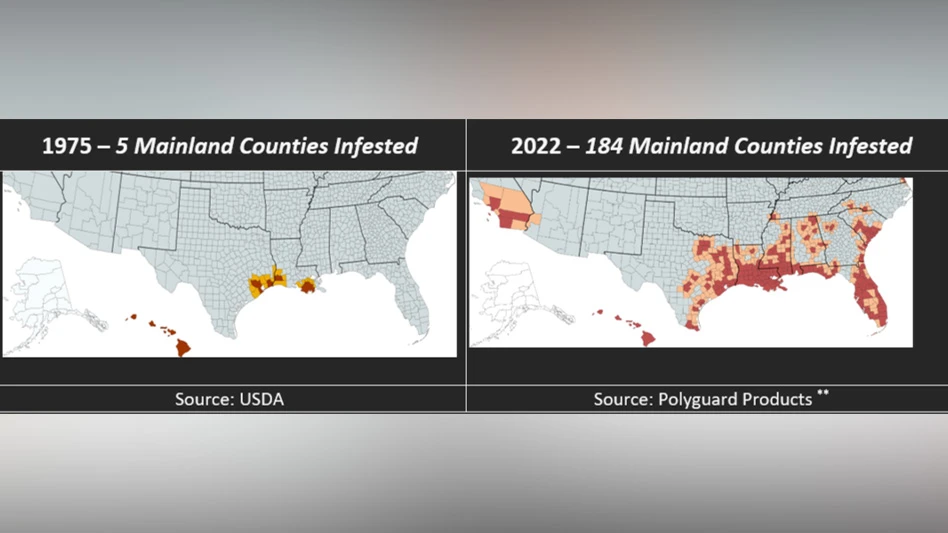
ENNIS, Texas – Climate change is enabling Formosan termites to spread northwards. Formosans termites are 10 times as destructive as native subterranean termites.
Each Formosan termite consumes the same amount of wood as native subterranean termites, but Formosan colonies can be 10 times larger than those of species native to the U.S.
Polyguard Products, a manufacturer of waterproofing materials for commercial and residential pest control, developed the TERM Barrier System, a physical termite barrier which has met the criteria of International Code Council’s AC 380 standard.
Pest management professionals (PMPs) are the preferred installers for three physical termite barrier applications within TERM’s Barrier System:
- Sealing plumbing penetrations using TERM Termite Sealant;
- Excluding termites from bath traps or mop sinks using TERM Particle Barrier or TERM All-Pest Bath Trap Barrier;
- Excluding termites from exposed concrete perimeters using TERM Particle Barrier.
Much of TERM’s Barrier System is incorporated into upgraded Polyguard waterproofing, which can exclude Formosan termites and all other insects almost around the building envelope.
Click here for information about TERM Barriers.
Latest from Pest Control Technology
- Donny Oswalt Shares What Makes Termites a 'Tricky' Pest
- Study Finds Fecal Tests Can Reveal Active Termite Infestations
- Peachtree Pest Control Partners with Local Nonprofits to Fight Food Insecurity
- Allergy Technologies, PHA Expand ATAHC Complete Program to Protect 8,500 Homes
- Housecall Pro Hosts '25 Winter Summit Featuring Mike Rowe
- Advanced Education
- Spotted Lanternflies, BMSBs Most Problematic Invasive Pests, Poll Finds
- Ecolab Acquires Guardian Pest Solutions





